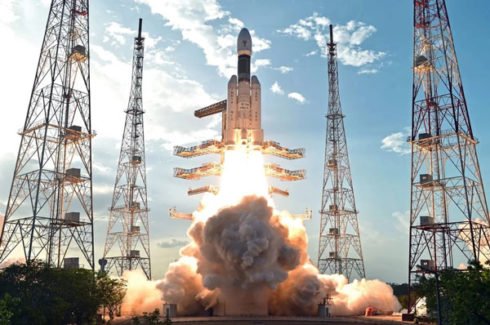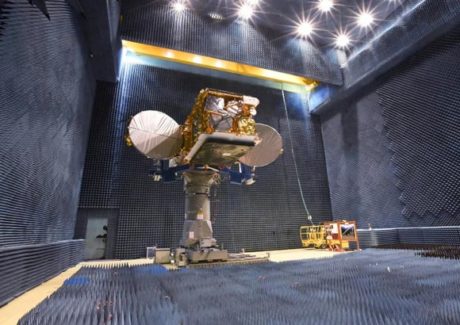

Credit: ISRO
India’s most powerful homegrown rocket to date is launched by ISRO, another milestone for its indigenous space programme that one day hopes to put a man into orbit.
At 5.28 pm on Monday the indigenous GSLV-Mark III took off succesfully in a bid to breach a heavy-lift rocket club that can put four-tonne satellites into space. The US, Russia, Europe, China and Japan are already there.
The GSLV is a three-stage vehicle with two solid motor strap-ons, a liquid propellant core stage, and a cryogenic stage. Weighing nearly 640 tonnes or about 200 adult elephants, GSLV Mk III will place the heaviest Indian communication satellite, the Gsat-19 into the geo orbit.
It is a three-stage vehicle with two solid motor strap-ons (S200), a liquid propellant core stage (L110) and a cryogenic stage (C25). GSLV-Mk III-D1 is the first developmental flight, carrying 3136 kg GSAT-19 satellite to a Geosynchronous Transfer Orbit.

Credit: ISRO
The vehicle is configured with a 5 m ogive payload fairing and slanted strap-on nose cone to provide aerodynamic robustness. The LVM3 will aim to reduce dependence on other countries as India has been using expensive European rockets to launch its heavier satellites weighing in at two tonnes.
The rocket is reportedly more manoeuvrable than other rockets launched earlier and this feature will help change its position in space. GSAT-19 is a communications satellite that will improve internet speeds in the country.
For the first time, there will be no transponders on the satellite. Instead for the first time, ISRO is using a whole new way beaming data down using multiple frequency beams and hence it is dubbed “a high through put satellite”.
Development of the GSLV Mk III began in the early 2000s, with the first launch planned for 2009-10. ISRO scientists took nearly 15 years to master the cryogenic technology powering the rocket which uses liquid oxygen and liquid hydrogen as propellants.
ISRO Launches Its Heaviest Rocket and Satellite





